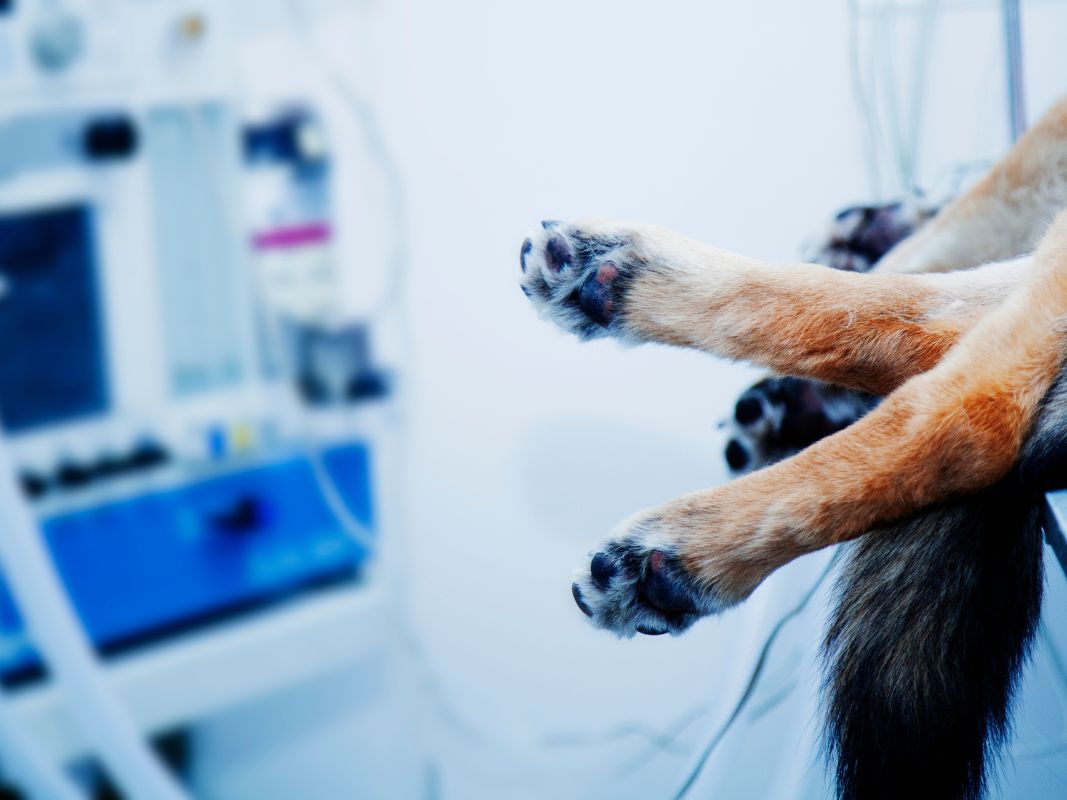|
No one likes being out of commission after a major surgery, especially dogs. Those long days of not getting to run around outside or jump up in your lap can take a toll on your dog’s patience—and yours. The key to helping your dog make the most of their recovery time begins by knowing the timeline of recovery for canine luxating patella surgery. This helps you understand how to treat your dog throughout the entire process. What Is Canine Luxating Patella Surgery?This type of surgery is meant to help correct a luxating patella, a knee cap that has popped out of place. There are a variety of causes of luxating patella in dogs. In many cases, a dog is born with the condition; this is especially common in toy breeds such as chihuahuas, Maltese, Pomeranians, terriers, or french poodles. In other cases, a dog may develop the condition after a major injury. Signs your dog has luxating patella include:
Fortunately, luxating patella surgery has a 90 percent success rate and typically allows dogs to regain their mobility. Timeline for Luxating Patella Surgery RecoveryThe recovery timeline for dogs after luxating patella surgery usually spans around eight weeks. While the specifics may vary, this is how those weeks typically look. 1 to 2 WeeksIn the first few days following the surgery, restricting your dog’s movements is essential. Consider confining your dog to a separate area of the house away from staircases or places where they are tempted to jump, such as couches or elevated beds. You should also limit their time outside to five to ten minutes on supervised leashed walks for toileting purposes. 3 to 6 WeeksBy the end of the second week, you should notice your dog beginning to tentatively put weight on their affected leg. However, you should resist the urge to allow them to return to full mobility, especially as it pertains to running and jumping. You can begin to reintroduce leashed walks at this time, limiting them to about ten minutes, three times a day. 7 to 8 WeeksBy this point, your dog will be slowly reaching the point of being fully active again. As your dog becomes ready, you can slowly increase the length of your dog’s walks and begin to allow them to climb stairs again. If you notice that your dog continues to have problems walking after eight weeks, consider contacting your veterinarian. Tips for Helping RecoveryA key way to help your dog recover more quickly is to introduce physical therapy starting two weeks after the surgery. Simple exercises will help strengthen muscles in the affected areas, speeding up recovery and preventing future injuries. Introducing heat and cold therapy after surgery can also help reduce swelling and mitigate pain. Whether your dog needs a luxating patella surgery or a spay-neuter clinic, we’re prepared to meet all your canine needs at the Animal Medical Center in the Antelope Valley. Contact us today to schedule your pet’s appointment.
3 Comments
8/4/2022 04:02:03 am
Additionally advised for your pet's rehabilitation is reintegration. "Rehab" encourages a quicker recovery to normal function by preserving joint range of motion, preserving or enhancing muscular growth, and enhancing balance and coordination. The rehabilitation regimen that is described below was created especially for your dogs throughout their post-surgery healing phase. While in most circumstances rehab is not strictly essential, it will hasten healing and raise the possibility of a successful conclusion.
Reply
Jan Penney
5/25/2023 04:25:14 pm
my 13 month old newfie had this surgery 4 weeks ago. I am very diligent on her recovery. Yesterday, I could hear like a noise like a snapping sound. She eats well, shows no sign of pain and wants to be more active, she is still leashed when she goes to do her potty trips. Is this normal as the bones heal? When I do her range of motion, I do not hear it, but now and then when she walks I can hear it. The surgery was very successful and her net x-ray is June 12th please advise me if anyone has had this issue Jan
Reply
5/12/2024 11:18:24 pm
A shiny coat and healthy skin are indicators of a dog's overall health. Regular grooming, including brushing and bathing, can help prevent skin infections, parasites, and other dermatological issues.
Reply
Leave a Reply. |
AuthorAntelope Valley Medical Center Team archives
June 2024
Categories |


 RSS Feed
RSS Feed
